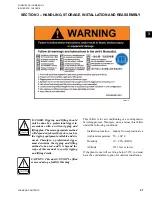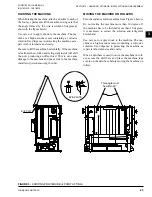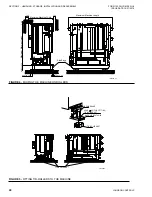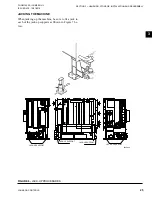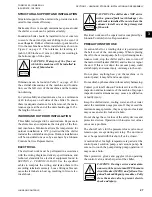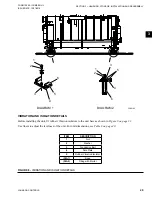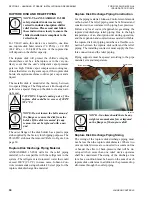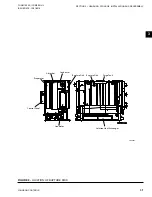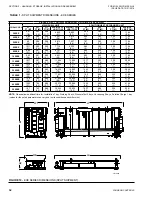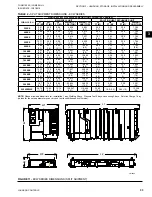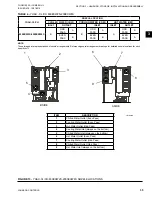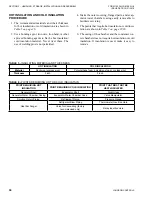
JOHNSON CONTROLS
22
FORM 155.30-ICOM2.EN.UL
ISSUE DATE: 12/21/2018
SECTION 3 – HANDLING, STORAGE, INSTALLATION AND REASSEMBLY
INSPECTION
The unit must be inspected prior to customer use by a
Johnson Controls Service representative. All damage
or possible damage must be reported to the transpor-
tation company. For further details, see
.
NOTE: If the chiller is shipped as dry
shipment, the chiller will be charged the
N2 to 4PSIG in shell side. The solution
and refrigerant water will be in the bar-
rels separately.
INSTALLATION GUIDELINES
WARNING: When evacuating the nitro-
gen charge (from the factory), be sure
the area is properly ventilated. Failure to
provide proper ventilation could result in
suffocation.
When storing the absorption chiller unit after it has
been delivered, note the following potential issues:
1. Problems with machine in storage:
a. Breaking of thin pipes caused by freezing of
the refrigerant (water) sealed in the machine
and resulting air leak (if solution and refrig-
erant is charged).
b. Breaking and air leak due to external damage
c. Deterioration of electrical parts caused by
soot and dust
Deterioration of electrical parts caused by rainwater
(moisture)
d. Rusting of the machine body caused by rain-
water (moisture). Air leaks can cause serious
damage and are costly repairs. Therefore,
use diligence in keeping the machine body
free from moisture at all times.
2. Problems and Preventative Measures
PROBLEM
PREVENTATIVE MEASURE
Freezing of
refrigerant in
machine
Store the machine where the ambient
temperature is higher than 32°F. If the
ambient temperature drops below 32°F,
use a heater to warm the machine. If a
heater is not accessible, the following
options are also available to prevent
freezing:
• Extraction of the refrigerant
• Addition of antifreeze to the refrig-
erant
• Installation of a band heater
For further instruction, contact your
nearest authorized Johnson Controls
Service Center.
External
Damage
Avoid storing the machine in a place which
is easily accessible or near a construction
site. If this is unavoidable, provide the
machine with suitable protection.
3. Periodic Inspection and Maintenance
a. Inspect the machine weekly for damage.
b. Check the machine compound gauge daily
to verify there is no decline in vacuum and
record the vacuum value. If the vacuum is
below the low limit, contact your nearest
authorized Johnson Controls Service Center
immediately.
c. If the vacuum has dropped as a result of
improper machine operation, contact your
nearest authorized Johnson Controls Service
Center immediately.
CAUTION: Use care that foreign matter
does not enter the drain valve and air vent
valve in the water chamber casing. Keep
these valves fully open while the machine
is in storage.














